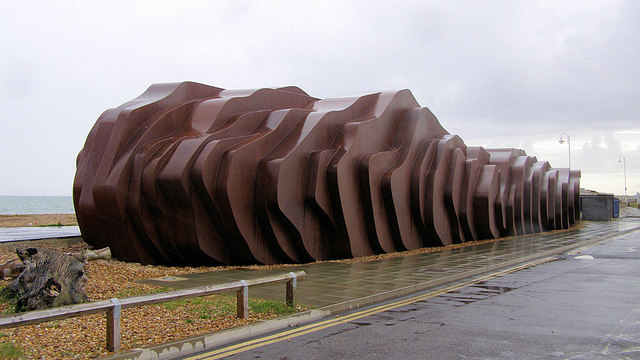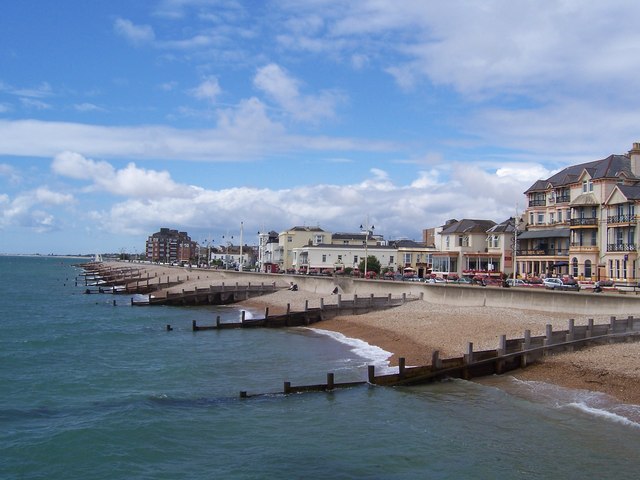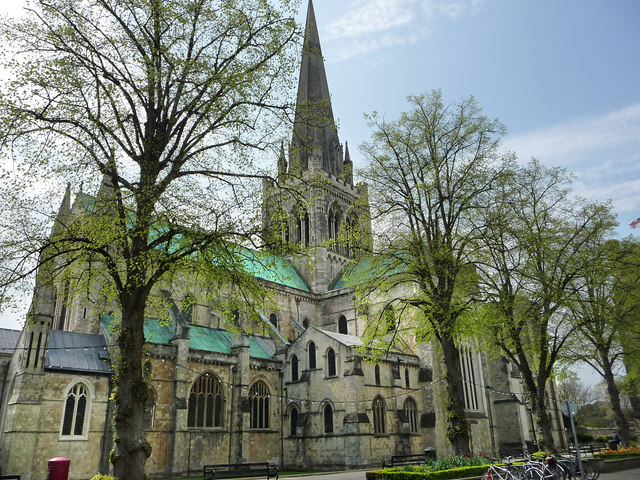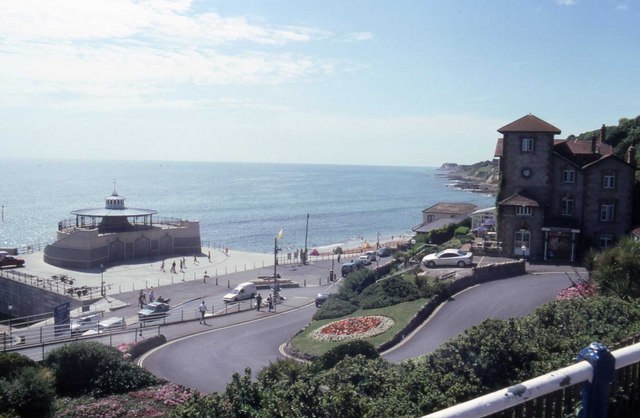The city of Portsmouth occupies a rectangular island called Portsea Island, although it is easily accessible from the mainland via the road network. The city includes the seaside resort of Southsea, and it is a major hub for sea transport, with
ferries linking the mainland not only with the Isle of Wight and the Channel Islands but also the coast of France and Spain. The port is also used by some cruise ships. For people returning to the city by ferry, the most prominent sight that greets them is the
Spinnaker Tower, an elegant 170-metre high tower in the style of a sail with magnificent views.
The western part of the island houses a naval base, and the
Portsmouth Historic Dockyard including the National Museum of the Royal Navy, and three historic ships going back in time: HMS Warrior, dating from 1860, HMS Victory, launched in 1765, and Henry VIII's warship
Mary Rose, which was raised from the seabed in 1982 watched by an anxious Prince Charles, who had closely followed the operation to bring the ship up from the seabed. There was a heartstopping moment when a steel frame supporting the vessel collapsed, but all was well in the end, and the ship is now on proud display to the public. The Dockyard was one of the locations used for the filming of Les Miserables. Another maritime attraction which is bound to prove fascinating is the
Explosion Museum of Naval Firepower. One of Britain's most famous writers, Charles Dickens, was born in Portsmouth, and his birthplace is open to the public as a
museum.
Southsea, meanwhile, is home to the
D-Day Story and the
Blue Reef Aquarium. Southsea Castle, built by Henry VIII in 1544, stands on the southern tip of the 'island' and offers displays on Tudor history and views out to sea at the eastern edge of The Solent.
For a list of events in Portsmouth, see
here.
Webcam views of Portsmouth Harbour from
HMS Warrior.
Map of the area.
 |
| Portsmouth Harbour from Gosport Haslar Marina 3. Photo by Editor5807, via Wikimedia Commons. |



















